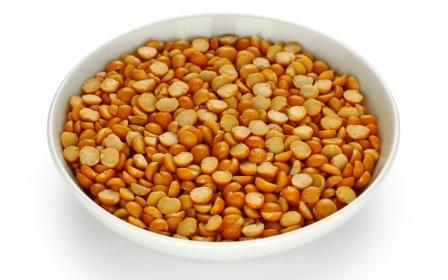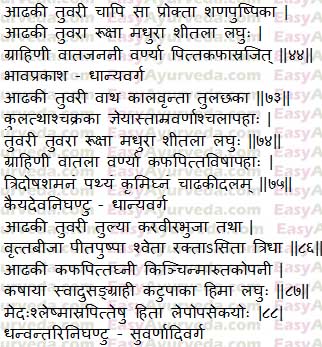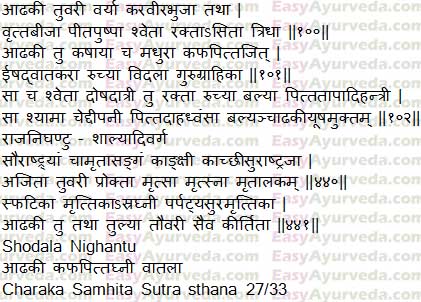Pigeon Pea (Tur Dal) – Uses, Qualities, Remedies, Research

By Dr Renita D’Souza
Pigeon pea is used both as food and medicinal legume. It is a good vegetarian protein diet. In Indian, Split pigeon peas (red gram) are commonly called as Tur dal and whole pigeon peas are called as Arhar dal. Along with seeds, young fresh pods, young shoots and leaves are also used for culinary purposes.
Botanical Name – Cajanus cajan
Synonym – Cajanus indicus
Family – Fabaceae
Table of Contents
Introduction

As a medicine, pigeon pea is used internally, in the form of soup and externally it is applied as paste or ointment. It is also included as one among the ingredients of medicated enema used in intestinal worm infestation (Ch Vi).
Read – Black Gram (Urad dal) – Uses, Side Effects, Remedies, Research
Traditionally toor dal is a good diet for liver. It brings about lightness in the body (langhana therapy). The leaves of red gram is used to stop bleeding, relieve pain and treat intestinal worm infestation. Leaves acts as laxative in nature. In some parts of India, the young stems and leaves are used as tooth brush and cures mouth ulcers, gingivitis etc.
Vernacular Names
Names in different Languages
English name – Pigeon pea, red gram, congo pea, gungo pea, and no-eye pea
Hindi Name – Toor dal, Arhar dal, Rahri dal, Rahar
Kannada Name – Thogari bele, Togari Bele
Bengali Name – Tur, Adar
Marathi Name – Turi, Toor
Gujarati Name – Turdalya, Tuvar
Telugu Name – Kandulu, Kandi pappu
Tamil Name – Thuvaram paruppu
Malayalam Name – Thuvara parippa
Read – Navara Rice (Shashtika Shali) Qualities, Uses, Remedies, Research
Qualities, Uses
Medicinal Qualities of Toor dal
Taste – Astringent (tuvara), sweet
Virya (potency) – cold
Vipaka (taste conversion after digestion) – Pungent (katu)
Ruksha – dry in nature
Laghu – light to digest
Grahi – absorbent in nature
Vatajani – increase vata dosha
Varnya – improves complexion
Effect on Tridosha
Balances pitta and kapha dosha
Read – Ayurveda Mahodadhi: Legumes Green Gram, Chickpea, Peas
Properties and action
Karma: Grahi, Ruchya, Krmighna, Vishaghna, FDipana
Roga : Raktadosa, Pittakapha vikara, Krimiroga, Daurbalya
Therapeutic uses of Arhar dal
Blood related diseases
Diseases related to fat tissue
Sanskrit Verse


Remedies, Rice preparation of Toor
Traditional Health Remedies of Red gram (tur dal)
- Poisoning – Inhalation of the fume of an incense stick (dhuma Varti) prepared of Brihati (Solanum indicum), Kantakari (Solanum xanthocarpum) and Leaves of Red gram (Cajanus cajan) cures hiccup caused by poisoning.
(Charaka Samhitha Chikitsa Sthana 23) - Laxative – Fresh juice or decoction of red gram leaves acts as laxative and used in intoxication.
- Stomatitis – The paste of red gram leaves is prepared and applied over mouth ulcers and inflammations.
- Induce lactation – Poultice prepared from pigeon pea leaves and seeds is applied over the Breast. (research)
Classical Rice Preparation with Pigeon pea (Adhakyanna) –
Adhaki (Pigeon pea) is cooked along with red rice is called as Adhakyanna. It balances kapha and pitta, heavy for digestion.
Read – Rice Combinations With Pulses, Vegetables, Grains, Soups
Toor dal – Good and Bad diet
Red gram as wholesome Diet
- Diabetes
- Vatarakta (gout)
- Obesity
- Raktapitta (bleeding diseases)
- Ulcerative colitis
- Liver diseases
- Autoimmune Hepatitis
- Jaundice
- Anemia
Read – Soup Of Green Gram, Chickpea And Horse Gram – Health Benefits
Red gram as Unwholesome diet
- Sciatica
- Brachial neuralgia
- Ascites
- Vata dosha aggravated diseases
Indigestion with Red gram
Treatment for Indigestion caused by Red gram (adhaki)
Indigestion caused by consuming Red gram (Cajanus cajan) is treated by taking sour fermented drink (kanjika).
Read – 120 Remedies For Indigestion Caused By Specific Foods
Part used
Leaves, seeds, young stems
Interaction with medicines, supplements
Can this be used while taking Homeopathic medicine?
Yes. This product does not react with homeopathic medicine.
Can
this medicine be continued while taking supplements like multivitamin tablets,
Omega 3 fatty acids etc?
Yes. Generally, this product goes well with most
of the dietary supplements. However, if you are taking more than one product
per day, please consult your doctor for an opinion.
With western
medicines
Seek your
doctor’s advice if you are taking this product along with other western
(allopathic / modern) medicines. Some Ayurvedic herbs can interact with modern
medicine.
If both Ayurvedic and allopathic medicines are advised together, then it is
best to take Allopathic medicine first, wait for 30 minutes and then take the
Ayurvedic medicine.
Nutritional value
Pigeon pea contain Protein – 22.3 %, Fat – 1.7 %, Minerals – 3.5 %, Fiber – 1.5 %, Carbohydrate – 57.6 %, Calcium – 73 mg/100 g, Phosphorus – 304 mg/100 g, Iron – 5.8 mg/100 g, Moisture – 13.4%, Calorific value – 335 Kcal/100 g (A)
Morphology, Distribution
Morphology of Red gram
Cajanus cajan is an erect, hairy shrub. Grows up to 1-2 meters in height. Leaves are oblong-lanceolate to oblanceolate with three leaflets. Flowers are yellow. It contains hairy pods which are 4-7 cm long and 1 cm wide. A pod contain two to seven seeds. Seeds are greyish brown, red or pale-yellow in color.
Flowering and fruiting time
August to December rains to autumn; F:rrming/harvesting
seasons.
Distribution
It is originated from either North-Eastern Africa or India. It is widely cultivated in all tropical and semitropical region.
Read – Barley (Hordeum vulgare) – Qualities, Uses, Remedies, Research
Research
- Toasted pigeon pea – A research study have concluded that, toasting improves the nutritional value by significantly reducing the anti-nutrients in pigeon pea. (read related)
- Germinated pigeon pea – A research study has proved that consuming extract of germinated pigeon pea reduced the fasting blood sugar level and hence concluded that germinated pigeon pea is a good diet in diabetes.
Ayurvedic medicine with Red gram
Ayurvedic medicine with Pigeon pea (adhaki) as Ingredient
Kankayan Vati – used in treating piles, bloating, intestinal worm infestation, heart diseases etc.
Maha Panchagavya Ghrita – used in treatment of fever, epilepsy, fistula, inflammation, piles, liver diseases, anemia, cough and psychiatric conditions.
Sanskrit synonyms
Adhaki, Tuvari, Shanapushpika, Varya, Karavirabhuja, Pitapushpa,Vrittabija, kalavrnta, Kulattha, Vakraka, Tamravarana
Classical Categorization
- Bhavaprakasha Nighantu – Dhanya varga
- Kaiyadeva Nighantu – Dhanya varga
- Dhanvantari Nighantu – Suvarnadi varga
- Raja Nighantu – Shalyadi varga
- Shodala Nighantu – Shimbi dhanya varga
- Ashtanga Hridaya – Shimbi dhanya varga
Varieties
These classical varieties- Sveta, Rakta and Sita
Scientific Classification
Kingdom – Plantae
Order – Fabales
Family – Fabaceae
Genus – Cajanus
Species – C. cajan
Properties as per Bhojana Kutuhalam
It is bitter, sweet and pungent in taste, healthy for hair, dry in nature and hot in potency. It helps in treating visha, visarpa, small eruptions, wounds and other disorders caused due to vitiated pitta and kapha.
The fruit is Sweet and Bitter,cold in potency,aggravates vata and light for digestion. The mature fruit is astringent and pungent in taste, checks disorders of agni, pitta, rakta and kapha.
Pigeonpeas, immature seeds, raw
आढकी तुवरा रूक्षा मधुरा शीतला लघुः |
ग्राहिणी वातजननी वर्ण्या पित्तकफास्रजित् ||४४|| (Bhavaprakasha poorvakhanda dhanyavarga)
Taste – sweet
Properties – light, dry
Potency – cold
After digestion taste transformation ( Vipaka ) – sweet
Effect on Doshas
Vata increasing
Pitta balancing
Kapha balancing
Pigeonpeas, immature seeds, cooked, boiled, drained, without salt
Taste – sweet
Properties – light, dry (more light than raw)
Potency – cold
After digestion taste transformation ( Vipaka ) – sweet
Effect on Doshas
Vata increasing
Pitta balancing
Kapha balancing (more Kapha balancing than raw pigeonpea as it is lighter)
Pigeonpeas, immature seeds, cooked, boiled, drained, with salt
Taste – sweet, slightly salty
Properties – light, dry (more light than raw)
Potency – not very cold (raw pigeonpea seeds are cold but salt makes it hot)
After digestion taste transformation ( Vipaka ) – sweet
Effect on Doshas
Vata increasing
Pitta nourishing (raw pigeonpea seeds are pitta balancing, but salt is Pittakara)
Kapha balancing (more Kapha balancing than raw pigeonpea as it is lighter)
Click to Consult Dr Renita D’Souza











8 comments
Jesse
Dear sir,
In the link below it says Adhaki is heavy and ushna virya. Could it be the above article is wrong and tur dal is pitta pacifying due to drying effect rather than due to supposed ushna virya? https://easyayurveda-com.cdn.ampproject.org/v/s/easyayurveda.com/2017/08/18/ayurveda-mahodadhi-legumes/?usqp=mq331AQCKAE%3D&_js_v=0.1#adhaki
Dr J V Hebbar MD(Ayu)Author
Master Sushruta has mentioned that it balances Kapha, Pitta and it does not increase Vata greatly. Charaka also says the same.
Going by these explanations, it is safe to assume that Adhaki is coolant.
Jesse
Why though? Kapha has a cool quality. So does vata which “is not aggravated greatly”. Couldnt this be explained by that it balances kapha due to dry quality and ushna virya despite adhaki being heavy, balances pitta due to dryness and heaviness and not aggravate vata greatly due to heaviness and ushna virya despite of being dry.
If you think this is wrong, then why does your other article contradict your own statement?
Not meaning to be disrespectfull. Just want to learn.
Dr J V Hebbar MD(Ayu)Author
The explanation does not fit well with Pitta balancing activity. dry and hot will have fanning effect on Pitta, which would still increase Pitta, despite being heavy.
Jesse
Isnt pitta associated with wetness rather than dryness? I had not heard of the fanning before, but Im in no means an expert.
Adhaki has astringent taste. Astringency alleviates pitta. That might be an explanation. Still dont understand why it is that youre saying its cooling whereas your other article says its ushna.
Dr J V Hebbar MD(Ayu)Author
In the other article, the opinion of Ayurveda Mahodhadi is quoted.
The fact that it balances both the Pitta and Kapha together means that its hotness / coldness are not on the extreme side and it does not matter much. This probably is the reason why Master Sushruta didn’t bother to explain if it is hot or cold.
Pallavi L
what is its ipact on vata?
in https://www.easyayurveda.com/2017/08/18/ayurveda-mahodadhi-legumes/ it is mentioned tht it controls aggravated vata in pectoral regeion, verebral region, abdominal region, but general perception of tur dal is it causes gas in stomach.. im confused. in this article too it was said that it increases vata..
plz explain sir.
Dr J V Hebbar MD(Ayu)Author
As mentioned in this article above, it increases Vata Dosha. Only when it is processed with oil, it can be useful against Vata Dosha.